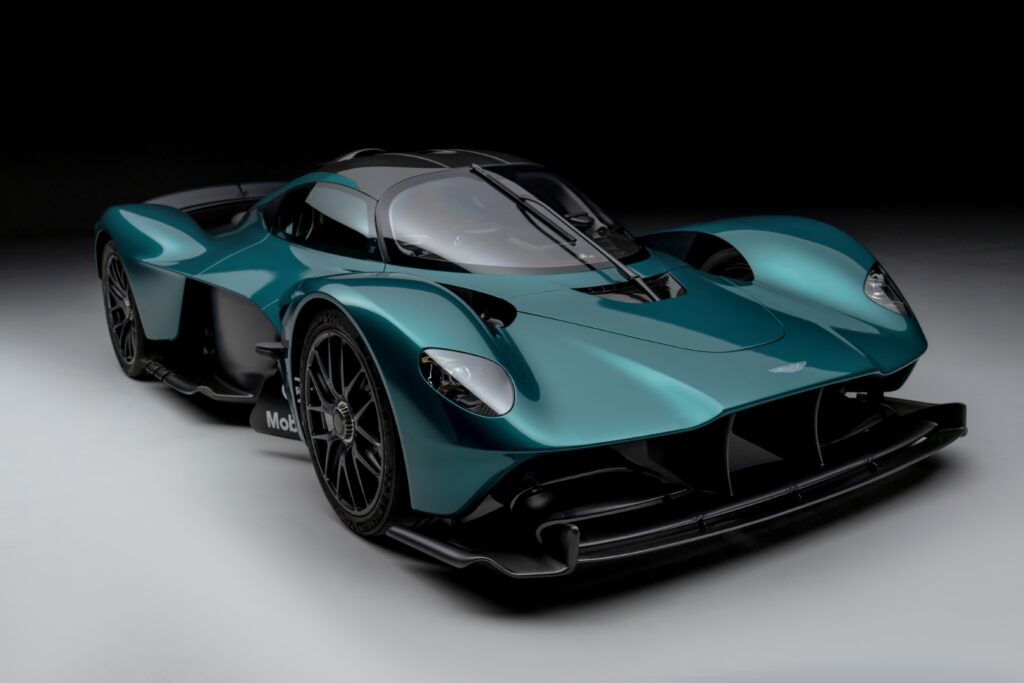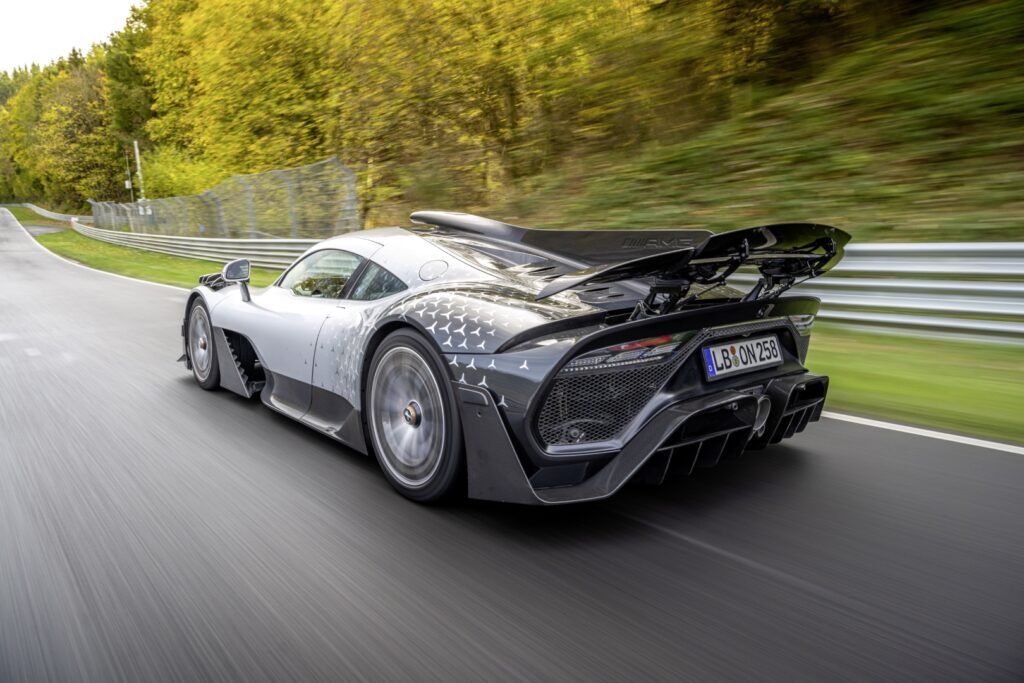Race Cars for the Road Make No Sense
The Mercedes-AMG ONE and Aston Martin Valkyrie are mechanical marvels and terrible cars.

It’s 2013, Porsche, McLaren, and LaFerrari have all released what they think is the most incredible supercar ever made. Each cost millions of dollars. Each was extremely rare. Each had close to a thousand horsepower through a V8 paired with a complex hybrid system. And all of them were incredible. The McLaren P1 was the track day savage; the LaFerrari was the lithe, sleek ultimate Ferrari; and the 918 was the perfectly composed ultimate Porsche, with curved headlights and up-firing exhausts. On the track, each was a masterpiece, but reviewers and owners noted that they are also eminently drivable on ordinary streets, which is where most owners would be driving them anyway.
Or, were they to drive their cars, it would be on the road. Collectors spend more than $1.5 million as an investment, not a commuter vehicle, so you’ll find more P1s with less than ten miles on the odometer than you will find examples with more than 10,000. Given their performance, that’s pretty heart-breaking, but one will occasionally burble past you as you walk through Singapore, Los Angeles, or London, and it’ll make your day.
The greatest testament to these cars is that they don’t seem old at all either. Ten years later, hybrid tech is only now trickling into production supercars in the $200 thousand bracket — notably, in the McLaren Artura and Ferrari 296 GTB. The P1, LaFerrari, and 918 could be released today and only the infotainment system would need an update.
A decade later, Aston Martin and Mercedes AMG have tried to replicate this moment with their latest competing creations; two multi-million dollar, hyper-limited, thousand-horsepower-plus, hybrid hypercars at the bleeding age of technology. In one corner, the swoopy, alien Aston Martin Valkyrie. In the other, the fin-covered, brutal Mercedes-AMG ONE.
They’re mechanical feats, but utterly stupid cars, and that comes down to their core conceit; being race cars for the road.

The Aston Martin Valkyrie was brought into being with Red Bull Advanced Technologies and Adrian Newey, the most successful Formula 1 designer in history. It’s powered by a 6.5L, naturally-aspirated V12, developed by the legendary engine builders at Cosworth. It’s light, savage to drive, and comes equipped with a range of systems plucked straight from Formula 1, namely it’s KERS-style hybrid boost system that gathers electrical power as you brake, and then allows you to release it on the straights.
Mercedes-AMG ONE is an even more literal version of the same concept, powered by a version of the PU106B hybrid 1.6L V6, found in their 2016 F1 car, but highly modified for road use. This also sounds extremely exciting, and they are doubtlessly incredible to drive on a track. Yet this whole concept is utterly stupid.

F1 engines need to comply with Fédération Internationale de l’Automobile competitive requirements, but they don’t need to comply with any emission or noise level regulations and are designed to last exactly one race, at full bore. To make it road-ready, you have to significantly detune that engine, resulting in a powertrain less capable than those developed primarily for road use, but with all the compromises of an F1 engine.
Both projects were extensively delayed and ran well over budget, with years of chatter at Aston Martin about whether they would even be able to release the car. They produced the non-hybrid, simpler, track-only AMR Pro variant first, hoping to get some momentum.
To start, car lovers always loved exhaust notes, which have only become all the more important with the advent of the electric era. Every petrolhead has their own personal favorites — mine being a Porsche 928 with a custom exhaust or the default Dodge Challenger Hellcat — and some cars have become legendary almost solely because of their sound. The Lexus LFA was a commercial disaster when it was released, but its immaculate V10 engine note — which Toyota engineers described as the “roar of an angel” — gradually brought their values above a million dollars today.
Yet the Valkyrie and the ONE sound awful. They have the scream of a high-revving engine but without refinement, so it’s just a crackly, cacophonous screech. Additionally, the engines are so loud that the $3.5 million Valkyrie comes equipped with individual driver and passenger headsets, which are necessary if you want to speak with your passenger and avoid long-term hearing damage.
Worst of all is the issue of reliability. Aston Martin has a particularly bad record for this, even by supercar company standards, so the Valkyrie is likely to spend more time in Aston Martin’s garage than the owners. Then there’s the F1-derived engine of the 2.4 million dollar AMG ONE, which only lasts 30,000 miles before needing a complete rebuild. Mercedes has said this is expected to cost roughly a quarter of a million dollars, but if your full transmission needs replacing, that will cost three times more.
And for what? The ride is uncomfortable in both. The AMG One isn’t road-legal in America, meaning owners have to import the car under “show and display” rules. If you aren’t a professional driver, you’re not going to be able to drive comfortably at speed, and they aren’t designed to help owners get used to them.
For example, the F1-derived KERS system in the AMG ONE often collects too much energy, meaning that the car will — without warning — turn off the engine at top speed, temporarily running on pure electric. Technically, that makes sense, but if you’re halfway around a corner in your 2.4 million dollar unreliable supercar, and the engine suddenly turns off, you probably will start praying.
The net result is that you won’t see these cars rumbling around city streets — they’re functionally undrivable — nor do I expect they will be great investments either. The Bugatti Veyron is among the most important cars of the 21st Century, and yet it remains extremely undervalued by investors, sitting at close to retail prices because it’s so difficult and expensive to maintain. An annual maintenance bill for a Veyron is roughly $40,000, and that’s if you choose to use aftermarket wheels, as most owners have given the cost of the first-party option.
In short, the AMG ONE and Valkyrie are incredible feats of engineering, but they are terrible cars. If you were interested in buying one, perhaps try the new Prius instead — it does look great.

